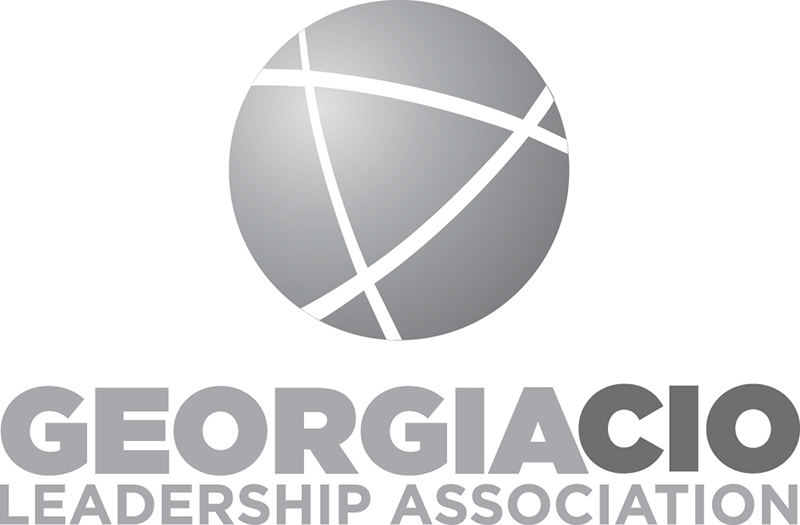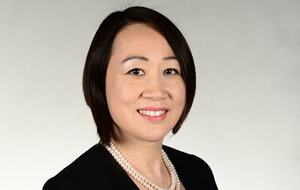(This interview is part of a series highlighting the winners of the Georgia CIO Leadership Association CIO of the Year Awards. Read the intro to this series here.)
Commuters in Atlanta who rely on public transportation know MARTA well. The Metropolitan Atlanta Rapid Transit Authority is the primary public transport operator in the area, operating trains and buses 20 hours each day. For MARTA CIO Sarah Ming Hsi, that means she’s regularly surrounded by the nonprofit’s customers.
Hsi recently won the Non-Profit CIO of the Year award from the Georgia CIO Leadership Association. In her short time in this role, Hsi has transformed the experience for customers who depend on MARTA every day for transportation, bringing the transit company into the digital age.
We asked Hsi to shine a light on how she maintains a healthy balance in IT so that innovation stays top of mind with her team.

The Enterprisers Project (TEP): Improving the customer experience for MARTA commuters through innovative technology is a strategic objective for you. Can you talk about how the customer experience has changed since you joined as CIO?
 Hsi: Over the last two years, we’ve transformed our IT department into a more external-facing organization. This started with the information we provided in the station. When I just started as CIO, we received a lot of customer complaints about our electronic signs at the stations. The majority of signs that were supposed to tell passengers when the next train would arrive were broken. After a little research, I found out that they were originally put in by an advertising firm, and their subcontractor had gone bankrupt.
Hsi: Over the last two years, we’ve transformed our IT department into a more external-facing organization. This started with the information we provided in the station. When I just started as CIO, we received a lot of customer complaints about our electronic signs at the stations. The majority of signs that were supposed to tell passengers when the next train would arrive were broken. After a little research, I found out that they were originally put in by an advertising firm, and their subcontractor had gone bankrupt.
A group of IT engineers got together, reverse-engineered the Python code behind the signs, purchased the replacement components and parts, and even converted some of the software to use Mac. Now over 95 percent of the signs are in working order, as compared to 30 percent when I came on board. And we’re continuing to make improvements, such as synching with the PA system, displaying service alerts, arrival and departure times for regional buses, etc.
That’s just one example. We’ve also done a lot to make MARTA more mobile friendly. People used to complain about the long lines at ticket vending machines during special events, so we started to look at other ways they could purchase their fare. We are implementing a mobile ticketing solution that allows you to purchase a fare on your phone, and it sends you a 2D barcode that you scan at the station. There is no longer a reason to wait in line. We’ve also formulated a public/private partnership with a company to improve cell service in our tunnels and underground stations at no cost to MARTA. These are just some of the initiatives we’re doing to improve customer experience.
TEP: Many CIOs struggle to find the balance between the more innovative work and the basic, “keeping the lights on” in IT. How did you address that at MARTA and keep a focus on innovation?
Hsi: There’s always going to be two aspects to IT: the day-to-day operational support and the new, exciting innovations. Daily IT operations have to be stable, and there is no room for failure. But with the other, fear of failure will stifle innovation. IT engineers like working on the innovative projects but do not have the time. Their time was consumed by the day-to-day operational tasks. We set up a network operation center with dedicated people monitoring and maintaining the systems. Our goal is to stabilize the systems, reduce unplanned outages and minimize the daily operation tasks, so we can collectively free up time to work on the new and exciting projects.
Innovation is also a culture changing movement. Just last month, we held our first civic hackathon near Tech Square. I brought my staff to the hackathon to mingle with the hackers who are also passionate transit riders. The room was full of energy. Over 100 hackers collaborated overnight and created apps, data analytics and ideas to improve our customer experience. It really helped to change our IT staff’s way of thinking, and they were eager to establish a bond with the local tech community. Culture change is something you cannot avoid if you want to innovate in a tradition IT environment. Every staff member must feel that it’s okay to start small, to fail a bit, to grow and learn in new ways.
TEP: Can you talk about how that focus on innovation helps with retention on your IT team?
Hsi: IT needs to use technology to attract and retain IT talent. IT talent will leave a company if they fear that their skillsets are outdated. With millennials moving into the workforce, this trend is intensified. Most people are not aware of all the cool technologies behind MARTA, from the mobile app to the state-of-art train control system. We work very hard to stay in the lead for transit technologies to attract talent. Besides cool technologies, we also invest heavily in training for IT talent retention. Each group is assigned with a training coordinator to help team members with developing training plans and course selections. Individuals have the flexibility to take the courses they want. A system administrator can take database or project management courses. That’s another way we attract and retain talent.
Talent retention is a problem every CIO is facing in Atlanta. Big digital companies, Mercedes Benz, State Farm, GE and Anthem, are moving their headquarters to Atlanta. If we went to compete with these companies for talent, we have to make our team feel that we care about their personal and professional growth.
TEP: Can you describe your background and path to becoming the CIO of MARTA, and how that has influenced your approach to mentorship?
Hsi: I’m a new CIO. I came to this country with two suitcases and a thousand dollars in my pocket. I’ve always been passionate about computers and technology. In China, I studied programming back when it was done on paper. I was glad to have the opportunity to attend college in the United States and continue to advance my career. Early in my career, I had a director who took me out of my comfort zone. I was happy sitting in front of a computer all day, but she asked me to present my projects to executives in project meetings. I was nervous and probably did a horrible job. But she saw potential and passion in me, and that really helped me to succeed. I want to be like the director who brought me out of my comfort zone and do the same for others.
TEP: What do you like best about being a part of the Georgia CIO Leadership Association?
Hsi: It’s the encouragement we give to each other. There is such openness of discussion, and any help I need, I can just ask, and everybody will chime in with tips and lessons learned. There is almost nothing held back. And that kind of a true communication and collaboration means so much to me.





